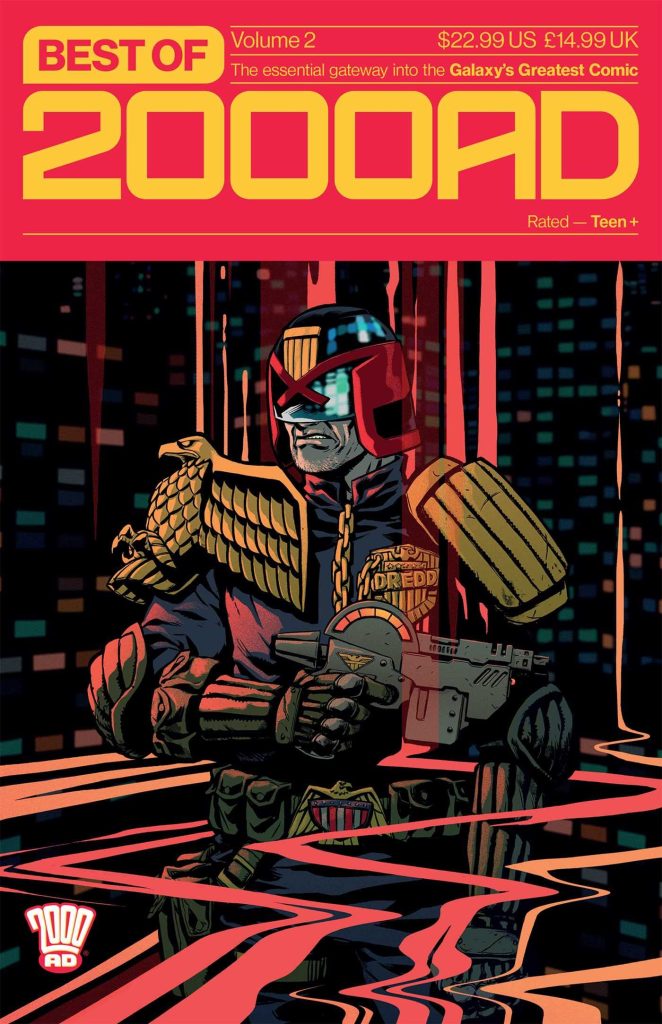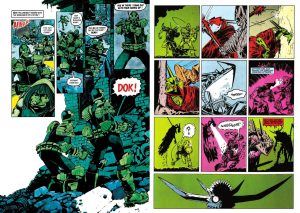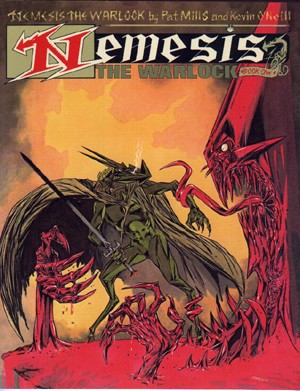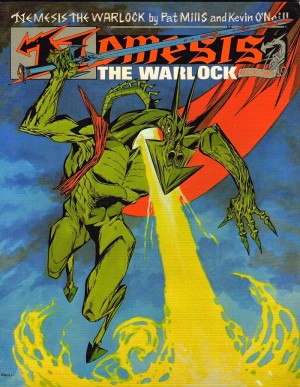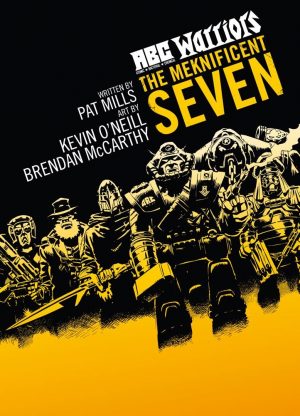Review by Frank Plowright
2000AD has had its ups and downs since being introduced in 1977, but it’s a very, very rare issue when everything is poor, and because it’s largely dealt with science fiction and versions of the future, there’s little that’s dated.
That’s proved by the longest inclusion here. Pat Mills and Kevin O’Neill introduced Nemesis the Warlock in 1981 and it still looks like nothing before or since, O’Neill’s artwork gruesome and twisted, the stuff of nightmares. Both he and Mills had strong views about organised religion, and fed them into a hateful future Earth where there’s no division between church and state and their imperialist subjugation infests the galaxy. It’s part sword and sorcery and part action thriller, but also very funny in places, and if Mills sometimes becomes a little too carried away with his descriptions, it’s still a magnificent experience. Tom Shapira presents some contextualising essays before the treat begins, and O’Neill has added sympathetic colour to what was originally a black and white strip.
As 2000AD’s most popular feature Judge Dredd features twice, including the most recent material. That’s Colin Wilson illustrating a darkly funny Al Ewing story of magic bullets that manifest from nowhere and are untraceable. It’s a good gimmick that pays off and for a relatively inexperienced writer Ewing delivers a completely convincing Dredd. Over 25 years earlier Alan Grant and Mike McMahon (sample spread left) produced a slight story about an alien energy beast, memorable for the fantastic art. Commissioned for an annual this is a rare McMahon story completely in colour, with his acrylic colouring every bit as distinctive as his art.
Dan Abnett and I.N.J. Culbard’s Brink is deliberately slowly paced to contrast the manic action rush of most 2000AD material, and as this presents the second half of the opening story, the first being in Volume 1, it’s where things take a strange turn. Until now it’s been a police procedural mystery, but Bridget Kurtiss is on the verge of discovering a whole new world of concern. It’s clever, and over subsequent volumes becomes ever more compelling.
Alan Moore’s ABC Warriors story is a deliberate attempt at producing something more lyrical for a feature that was then hyperactively violent. As with most Moore material, there’s thought and he has a point to make, but it’s more likely you’ll remember the Steve Dillon art as painted by John Higgins.
Via Jamie Delano and Alan Davis, D.R. and Quinch offer some more completely impractical advice over the closing page. There’s a case to be made for every inclusion living up to the title, making for another fine collection. Volume 3 follows.
